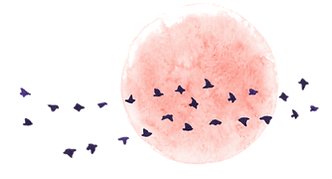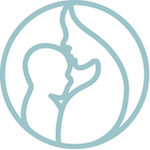The different diagnostic tools and skills and the different medical paradigm applied in a Craniosacral treatment session (compared to what you might typically receive in a hospital) result in a very different view of diagnosis, and very different types of differential diagnosis. In fact, a medical diagnosis (e.g. "frozen shoulder") is not often particularly useful to me as a Cranial practitioner.
From my perspective as a CST practitioner, unless one can identify some chain of causality, then any treatment applied may (i) not be targetting the proper place, and (ii) may at best suppress, or sometimes may further aggravate the problem. The same could be said of infections - since the body has an excellent immune system that has evolved over several hundred million years, it is necessary to ask WHY it stopped working adequately in a particular instance? Or one could just administer antibiotics and ignore possible primary causes for the possible predisposing loss of immune capacity.
To carry on with one of the above examples... from a Craniosacral point of view there are several possible causes of what is commonly termed "frozen shoulder", the most common being :
- Direct injury to the shoulder - a twist or other excess loading on the joint capsule. Usually the person is aware this has happened, and sometimes local physical therapy will resolve these cases. However, the injury may have been set up to occur by any of the following...
- Chronic aggravation of the joint capsule - may be caused by an injury (again see below), but there may be other causes - resulting in a reduction in local blood, lymph or nerve supply to the shoulder. This would usually manifest as more of a localised "arthritic" condition. Here we would look to restore normal circulation and nerve supply.
- Some kind of damage or compression or aggravation/inflammation of nerves supplying that area
- An infection which has entered deep in the muscles and tissue of the shoulder. If this is caught quickly (within maybe 2-3 weeks of onset, 15 minutes lymphatic work is enough to bring the shoulder back to full health.
- A difficult emotional issue which has not been resolved - the physical pain is somatised emotional pain
- Overactive acupuncture meridians in that area
- An area of weakness or torsion elsewhere in the body which the muscles of the shoulder are counteracting
In the last 3 cases above, the pain in the shoulder is arising because the shoulder is expressing health - it is working hard to contain a problem arising elsewhere. This is not untypical for muscle tension patterns - muscles may be in spasm because they are working 24/7 to maintain the alignment of the body. Punishing them further in these circumstances by pummelling and application of knuckles, TENS, ultrasound etc etc is likely to cause aggravation of local nerves and/or other secondary musculoskeletal problems elsewhere. But ignoring the shoulder completely and resolving the whole-body twist pattern by tracking it back to its source would in turn relieve the shoulder.
In the case of nerves, it must be remembered that a nerve can be inflamed or trapped anywhere from the site of pain/immobility through to the sensorimotor area in the brain that it connects to. The most common location of nerve compression/inflammation for the shoulder is the spinal nerve roots of the neck, so it is also important to check for whiplash and other neck injuries, and for conditions that might affect the brachial plexus (e.g. old lung infections). If this is the Right shoulder, the nerves may also be inflamed (via the Phrenic Nerve) due to the membranes of the diaphragm above the liver being aggravated - which in turn could indicate a hernia or a liver problem. So viscerosensory connections can also create backwards chains of cause and effect, ending up in quite surprising and apparently disconnected parts of the body. For instance, an ectopic pregnancy may cause pain at the tip of the shoulder blade.
Although this might look complex, a few minutes talking about the specific occurrence of pain, plus a history of injuries and health issues, plus a willingness to "listen" to the story that the body and tissues are telling ("palpation") will often point to the source of the shoulder immobility, and then the tissues of the body also usually are able to offer a solution if they are further listened to and assisted. I once attempted to create a decision tree similar to the above for cardiovascular problems, and it was clearly far too complex to be of any practical use. One advantage of CST is that we use abnormal physiological motion of the body as a means to diagnose the "where" that problems are arising from, and this often gives some clues as to the "what".
Of course, we have now entered a causality chain and have no idea how long it may be. It's possible to ask - why did in infection enter the muscles in the first place? Or how did that whole-body twist first occur? Or what set this person up to suffer a hernia or lung infection? Getting to the bottom of this chain is sometimes a long process of taking layer upon layer off the onion until there is no onion left. More often we just have one or two easy steps to traverse. And in general, if we just focus on building health and ignore the pathology, this can result in the body reorganising itself into a more healthy state.
Each treatment is tailored to your individual needs, and so no two treatments are the same. The help I provide encompasses a broad range of
techniques, from structural and lymphatic through to subtle Cranial and biodynamic approaches. I also apply and teach mindfulness and embodiment to provide a degree of
body-mind integration - which also helps physical healing in many cases.
 Differential diagnosis
Differential diagnosis







